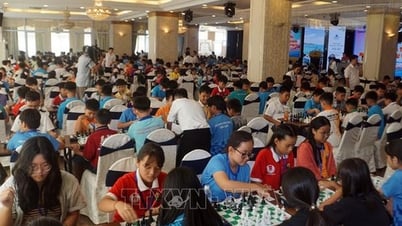The movement of aircraft and other vehicles in the area around a Russian Arctic base matches preparations related to missile tests in 2017 and 2018 called Burevestnik or SSC-X-9 Skyfall.
US spy planes have also been tracked in the area over the past two weeks, and air warnings have been issued to warn planes against entering the airspace.
According to the Nuclear Threat Initiative, a nonprofit focused on arms control, Russia conducted 13 tests between 2017 and 2019, all of which failed. The resulting accidents can have serious consequences. A missile launched in 2019 crashed and exploded while being recovered, killing seven people.
“This is a new weapon, and it’s very dangerous while it’s still in the development and testing phase,” said Daryl G. Kimball, director of the Arms Control Association. It’s unclear whether the Burevestnik has been tested since 2019, but even if it’s successfully tested, it will likely take years of development before it’s ready for “operational deployment.”
In previous tests, the missile traveled far short of its intended range of 14,000 miles. In its most successful test, a two-minute flight, the missile traveled just 22 miles before crashing into the ocean, U.S. officials said. In another test, the missile’s nuclear reactor failed to ignite, causing the missile to fall just a few miles from the launch pad. For a successful test, the missile’s nuclear reactor would need to ignite mid-flight, increasing the missile’s range.
The missile is a “strategic strike, counter-strike weapon,” designed to be launched in response to a nuclear attack on Russia, according to the Nuclear Threat Initiative. It can carry a conventional explosive warhead, but in reality it would likely carry a nuclear warhead, although it would be smaller than most nuclear weapons. In wartime, it would be capable of destroying large populated areas or military targets.
Although Russia has not revealed much about the Burevestnik's design, President Vladimir Putin has said that the missile is nuclear-powered. It is believed to be launched using a solid-fuel rocket engine, before a small nuclear reactor is ignited mid-flight, giving it virtually unlimited range.
Burevestnik is one of six strategic weapons, along with weapons such as the Kinzhal ballistic missile and the Avangard hypersonic weapon, that Mr. Putin introduced in 2018. He asserted that these weapons can overwhelm and overcome US defense measures. Speaking of Western countries, he said: “They have not been able to contain Russia.”
Several satellite images before and after test preparation provide visual evidence.
Images taken on the morning of September 20 show multiple vehicles at the launch pad, including a tractor-trailer truck that appears to be the size of the reported rocket. A weather cover that normally covers the launch pad has been moved about 15 meters. By the afternoon, the tractor-trailer was no longer in the image and the cover had been moved back to its original position.
Satellite images taken on September 28 show more activity at the launch pad, with a similar tractor trailer appearing there and the cover being moved again.
On August 31, Russian authorities issued a notice to airmen calling for a “temporary danger zone,” advising pilots to avoid the Barents Sea area about 12 kilometers from the launch pad. The notice has been extended several times and was scheduled to be in effect until Sunday, October 6. The Russian government issued a similar notice during Burevestnik testing in 2019.
In addition, two Russian missile data-gathering aircraft have been parked 100 miles south of the launch pad since August at the Rogachevo air base. The aircraft, owned by Rosatom, Russia’s nuclear energy company, were there until at least September 26, according to satellite imagery. Similar aircraft were seen at the test site during the 2018 Burevestnik test.

Photo: Planet Labs, NYTimes.
The US reconnaissance aircraft RC-135W Rivet Joint made two flights around the launch pad area on September 19 and 26. These two flights marked an increase in flight activity compared to the usual flight frequency.
The secretive nature of the Burevestnik missile and the remote launch site make it difficult to determine whether the missile is still being prepared for testing or whether a test has already been conducted. While past Burevestnik tests have been conducted at the Arctic base, Russia could also be testing the rocket engine or a component of the missile.
The White House declined to comment on the findings.
Experts say the missile is dangerous not only because of its ability to carry a nuclear warhead, but also because of its potential to release dangerous radiation if it explodes or crashes in flight.
If deployed, Burevestnik would be considered part of Russia's nuclear arsenal, binding Russia to a nuclear arms reduction treaty Moscow signed in 2011. The agreement sets limits on the total number of warheads and delivery vehicles each country is allowed to possess.
But with the New START treaty set to expire in February 2026, if no new treaty is signed, Kimball believes the missile could contribute to “accelerating the process of plunging the world into an out-of-control arms race.”
Overall, he said, the missile test “is a sign that Russia is going in the wrong direction.”
Nguyen Quang Minh (according to NY Times)
Source























































![[Maritime News] Two Evergreen ships in a row: More than 50 containers fell into the sea](https://vphoto.vietnam.vn/thumb/402x226/vietnam/resource/IMAGE/2025/8/4/7c4aab5ced9d4b0e893092ffc2be8327)












































Comment (0)